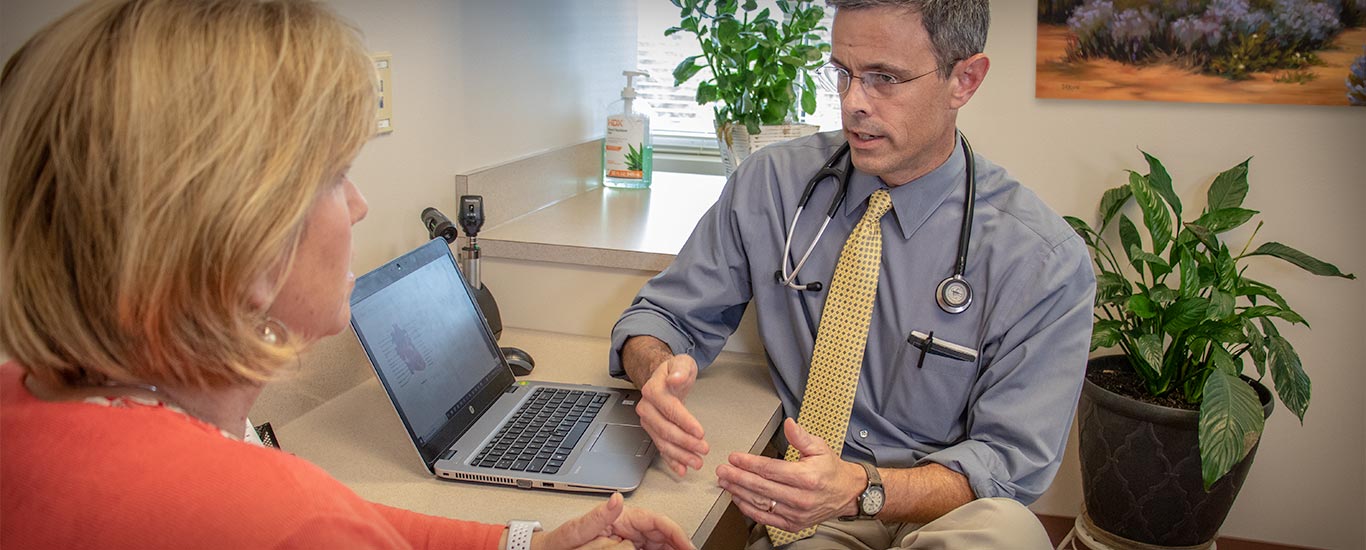Less Breast Cancer Screening???
I’m Dr. Patrick O’Connell. This is Sentinel Primary Care in Brier Creek in Raleigh. Today we’re talking about breast cancer screening and mammograms and the new recommendations from the American College of Obstetrics and Gynecology. These recommendations propose less breast cancer screening. Now, breast cancer is the number one cancer among women and cancer is the number two killer among women. And the recommendations propose less screening? How on earth does this make any sense? Well, as it turns out, the answer to this is fascinating. Join me for today’s topic.
So in June of this year, the American College of Obstetrics and Gynecology updated their guidelines on breast cancer screening for average-risk women. Now, if a woman is at high risk of developing breast cancer, these guidelines do not apply; so keep that in mind. But with these guidelines, they followed in a sequence of updates that have been happening for a number of professional organizations over the past six or eight years that all in general are moving toward recommendations for less-frequent breast cancer screening and perhaps beginning at a later age than what we’ve all become accustomed to.
I’m going to put on screen from the ACOG (American College of Obstetrics and Gynecology) a graph or a table that summarizes the recommendations from a lot of these organizations. As you look at the graph — pause the video to look it over for a moment — but the first thing is your head might start to swim in the nuances of this organization versus that organization and this suggestion versus that suggestion. But don’t let your head swim. I think the more important takeaway point is to see that in broad brush strokes, all of these professional organizations are recommending roughly the same thing, which is less breast cancer screening. So then the question is how does this make sense? How is it that for a cancer that is as common as breast cancer that all these professional groups are suggesting less screening?
Well, let’s talk through this because this is really interesting. This is a really fascinating topic and the biology of it, the way that we as people work answers the question. So the recommendations from ACOG name a couple of the downsides of screening because downsides are really the key here. They name a couple things: the first is the distress of an abnormal mammogram, a false positive, when a woman gets a call that says we need you to come back to get more images; there’s a suspicious area. Or a woman goes to get a biopsy but at the end of the day these turn out not to be cancer. Well, it’s good news that it turned out not to be cancer, but it’s a very distressing experience. ACOG names this downside, but I think most women, given the choice of finding their potentially lethal breast cancer early versus the downside of having to come back for more mammograms, I think most women would say give me the mammogram.
A second downside that they name is the risk that comes from the radiation from the mammograms, although this is a learning point for me in terms of the magnitude of that risk, it turns out to be very small. So the good news is that the likelihood that a woman saves her life from breast cancer through a mammogram versus the risk that a woman develops breast cancer or dies of breast cancer because of the radiation from the mammogram is 60 to 1. That’s way favorable and tips heavily on the side of screening.
So where’s the issue? Where is the downside of screening? The downside is the phenomenon of finding a breast cancer that a woman did not need to know about. The question is, what kind of cancer is that? What kind of cancer do we not need to know about? Here’s the fascinating topic. So it turns out that what I’m going to say applies to a variety of different cancers, not just to breast cancer. One of types of cancer that doesn’t matter would be a very slow-growing cancer. Okay, fine, if you do a mammogram next year instead of this year, well, that’s fine. You don’t find the cancer this year but you’re going to find that very slow-growing cancer next year. So I’m not sure that slow-growing cancer makes a big difference in terms of how often to do mammograms. I think the more important cancer is the one that the woman’s immune system kills. So think about that: The immune system kills the cancer. So it turns out, here’s what happens in a variety of different cancers, not just breast cancer, normally we think of the immune system as our armor against the outside world. It keeps the bacteria out, it fends off the viruses, it keeps the fungi from growing, it keeps us protected. And indeed, that’s a major job of the immune system. But it turns out it’s not the only job of the immune system. The immune system also has the job of performing an internal surveillance function, keeping an eye on our own cells, looking for cells that are malfunctioning and then taking those cells out of circulation.
One of the malfunctions that a cell can develop is cancer. So a cell gets just the wrong combination of mutations, loses the ability to regulate its own growth, and begins to proliferate into a small tumor, well, some of the proteins on the surface of that cell become abnormal as a consequence of the genetic mutations. The immune system often can recognize those abnormalities, attack those cells, and eliminate the cancer.
Part of the immune system’s job is not only to protect us from outside invasion but to protect us from internal dysfunction, particularly cancer. So this is the danger. Because envision this: A woman develops a breast cancer; in six months her immune system is going to eliminate the cancer and she will be a cancer survivor and not even know that she had cancer. But what happens if that woman has a mammogram three months from now before her immune system eliminates the cancer? Well, now she is correctly diagnosed with breast cancer but it’s a breast cancer that she didn’t need to know about and in fact, it’s worse that she knows about it because now she’s going to have treatment for breast cancer, she’s going to get surgery and potentially radiation, potentially chemotherapy and potentially estrogen-blocking medications, and she doesn’t need any of it. It would have been better for her if she had not known about her cancer. That is the big downside of mammograms.
So the proposal then to begin later and to screen every other year instead of annually is to give the immune system more time to do its job, to find fewer of these sorts of cancers. So the question is, how big of a problem is this? As you can imagine, it’s difficult to study directly the frequency of these sorts of cancers that the immune system eliminates, but using statistical modeling, researchers think it’s probably 10 to 20 percent of cancers diagnosed through mammograms that fall into this category of cancers where the immune system was going to kill it, we didn’t need to find it and treat it with chemotherapy and surgery and all these things; so it is not an insignificant issue.
So then as researchers do more statistical modeling to say, well, what’s the frequency of mammograms that gets the best balance of catching the dangerous cancers and not catching the not-dangerous cancers, that’s where they came up with the every-other-year mammogram, and that’s also why they suggest maybe not screening in the 40s. Now, the caveat is that this is based on statistical modeling which is a bit like weather forecasting, so 10 to 20 percent of mammography-diagnosed cancers may in fact be these ones that we didn’t need to know about. 10 to 20 percent chance there’s going to be thunderstorms tomorrow, maybe you get rained on, maybe you don’t, maybe you bring your umbrella, maybe you don’t; so there’s a little bit of percentage speak and risk speak that that makes it a little bit challenging. So the options then are for either every other year or yearly. Some women have said, I love the idea of ever a year, and some women have said I’m not sure I want to be the first person in town to start going every other year and I get that. Along those lines, ACOG guidelines recommend not that you screen every other year but that you talk it over with your doctor and you decide how often to screen. Both are reasonable: Annual or every other year? Starting at 40 or starting at 50? It’s weighing out these pros and cons of catching the dangerous cancers and trying not to catch the not-dangerous cancers.
This is a fascinating topic. Given the importance of this issue, send this video to your friends. I think there are a lot of people who would be interested. Thank you for your interest. I’m Dr. Patrick O’Connell with Sentinel Primary Care.


